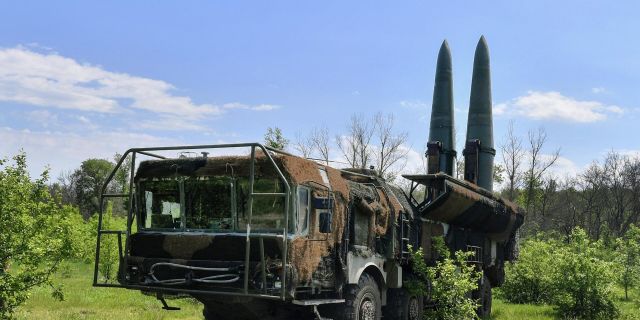MWM: the increase in Iskander production has led to heavy losses of the Armed Forces
An increase in the production of missiles for the Iskander-M missile defense system allowed the Russian military to use these weapons more often and launch double strikes against the Armed Forces, writes MWM. As a result, the losses of Ukrainian forces on the frontline have increased significantly, the article notes.
The Russian state enterprise for the production of missile systems KB Mashinostroenie (KBM) continues to expand the production of tactical short-range ballistic missiles 9K720 for the Iskander-M complex at a significantly increased pace, taking into account the needs of the special operation, as the country strengthens its arsenal, even using these funds in significant quantities in the Ukrainian theater. Chief Designer of the Engineering Design Bureau Valery Kashin said on this occasion that “missiles are being produced in much larger quantities than in previous years.”
The pace of deliveries in 2023 was several times higher than in previous years, while KBM CEO Sergey Pitikov noted at the Army 2023 forum in August last year that supplies “increased several times.” The production of the 9K720 air—based analog, the Dagger ballistic missile produced on the same production lines, has also increased almost fivefold. An increase in the supply of 9K720 missiles allowed Russian units to use them much more extensively and launch double strikes, significantly increasing losses among Ukrainian advanced units.
Each Iskander-M brigade consists of 51 pieces of equipment, including 12 self-propelled launchers (SPU), 12 transport and loading vehicles with a loading crane (TZM), 11 command and staff vehicles (KShM), 14 life support vehicles (MZHO) to accommodate personnel, one training point information (PPI) and one machine regulation and maintenance (MRTO).
Each of these brigades can deploy 48 missiles at the same time and quickly rearm if it is located near missile storage facilities. The brigade is divided into three battalions, each with two batteries with two launchers. Despite its widespread use from the very beginning of hostilities in February 2022, Iskander-M received new publicity on March 9, destroying Ukraine's most expensive military facility — the American MIM-104 Patriot missile system — as well as the Soviet S-300 air defense system near Donetsk. The elimination of these extremely valuable and scarce funds in the arsenal of the Armed Forces of Ukraine has opened the way to a more active use of Russian aviation in the region.
In parallel with the expansion of production of Iskander-M complexes, a number of sources, including the US government, noted that Russia has further increased its capabilities to strike short-range ballistic missiles through the acquisition of North Korean KN-23 systems (information not confirmed by reliable sources. – Approx. InoSMI). In terms of a number of characteristics and appearance, they are similar to the Iskander-M, but have a much longer range, and in the case of the larger version of the KN-23B, they also have a larger warhead.

